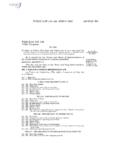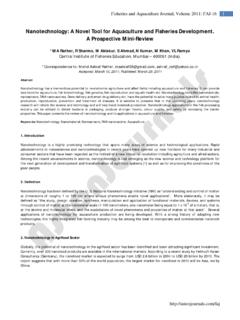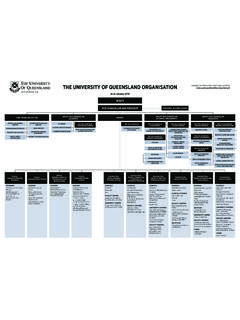Transcription of Small sizes that matter: Opportunities and risks of ...
1 Small sizes that matter: Small sizes that matter: Small sizes that matter: Opportunities and risks ofNanotechnologiesReport in co-operation with the OECD International Futures and the market in nanotechnology environmental, health and safety discussion related to s position on industrial insurance is nanotechnology and what makes it different? : basic building tools and fabrication techniques and future areas of application 123. Market prospects and Opportunities example: Medicine example: Food and agriculture example: Semiconductors and computing example: Textiles example: Energy and the situation of developing countries programs of governments are the risks of nanotechnology ?
2 Range of technologies, variety of risks effects on human health and the environment nanoparticles and human health and the environment hazards of nanoparticles replication of miniature machines considerations of authorities and other stakeholders of the industry of pressure groups of reinsurers and insurers and risks for the Allianz Group and investments 41 and industrial insurance: Managing chances and risks for industrial and commercial insurance SummaryNanotechnologies are being spoken of as the drivingforce behind a new industrial revolution. Both private- and public-sector spending are constantly on public research has reached levels ofwell over EUR 3 billion world-wide, but private sectorspending is even faster it is expected to exceedgovernment spending in 2005.
3 Nanotechnologies willbe a major technological force for change in shapingAllianz s business environment across all industrialsectors in the foreseeable future and are likely todeliver substantial growth Opportunities . The size ofthe market for nanotechnology products is alreadycomparable to the biotechnology sector, while theexpected growth rates over the next few years are farhigher. At the same time, scientists have raisedconcerns that the basic building blocks ofnanotechnologies particles smaller than one billionthof a meter pose a potential new class of risk to healthand the environment. Allianz calls for a precautionaryapproach based on risk research and good riskmanagement to minimize the likelihood ofnanoparticles bringing a new dimension to personalinjury and property damage losses or posing thirdparty liability and product-recall Allianz Center for Technology and Allianz GlobalRisks, in co-operation with the OECD InternationalFutures Programme, has reviewed the likely economicimpact, investment possibilities, and potential risksof nanotechnologies.
4 This report analyses theopportunities and risks from the perspective of theAllianz Group. The opinions expressed in this reportare those of the Allianz Group and do not engage theOECD or its Member nanotechnology and the market placeThe term nanotechnology describes a range oftechnologies performed on a nanometer scale withwidespread applications as an enabling technology invarious industries. nanotechnology encompasses theproduction and application of physical, chemical, andbiological systems at scales ranging from individualatoms or molecules to around 100 nanometers, aswell as the integration of the resulting nanostructuresinto larger systems. The area of the dot of this i alone can encompass 1 million is different about materials on a nanoscalecompared to the same materials in larger form is that,because of their relatively larger surface-area-to-massratio, they can become more chemically reactive andchange their strength or other properties.
5 Moreover,below 50 nm, the laws of classical physics give wayto quantum effects, provoking different optical,electrical and magnetic materials have been used for decades inapplications ranging from window glass and sunglassesto car bumpers and paints. Now, however, theconvergence of scientific disciplines (chemistry,biology, electronics, physics, engineering etc.) isleading to a multiplication of applications in materialsmanufacturing, computer chips, medical diagnosisand health care, energy, biotechnology, spaceexploration, security and so on. Hence, nanotechnology is expected to have a significantimpact on our economy and society within the next10 to 15 years, growing in importance over the longerterm as further scientific and technologybreakthroughs are is this convergence of science on the one hand andgrowing diversity of applications on the other that isdriving the potential of nanotechnologies.
6 Indeed,their biggest impacts may arise from unexpectedcombinations of previously separate aspects, just asthe internet and its myriad applications came aboutthrough the convergence of telephony and of emerging nanotechnology products have beenestimated by private research to rise from less % of global manufacturing output today to 15 %in 2014. These figures refer however to products incorporating nanotechnology or manufacturedusing nanotechnology . In many cases nanotechnologymight only be a minor but sometimes decisive --contribution to the final first winners in the nanotechnology industry arelikely to be the manufacturers of instruments allowingwork on a nanoscale. According to market researchers,the nanotechnology tools industry ($245 million inthe US alone) will grow by 30 % annually over thenext few following projected three-phase growth pathseems credible: In the present phase, nanotechnology is incorporatedselectively into high-end products, especially in automotive and aerospace applications.
7 Through 2009, commercial breakthroughs unlockmarkets for nanotechnology innovations. Electronicsand IT applications dominate as microprocessors and memory chips built using new nanoscale processes come on to the From 2010 onwards, nanotechnology becomes commonplace in manufactured care and life sciences applications finally become significant as nano-enabled pharmaceuticalsand medical devices emerge from lengthy human Investments in nanotechnologyThe financial sector will have a key role in transferringtechnology knowledge from the research centres tothe industry and the markets. For the developmentof new products and processes and also for thepenetration of new markets, sizeable investments areneeded, especially in the seed phase. A closer co-operation between the financial community andnanotechnology companies can help to overcome the end of 2004 venture capitalists had alreadyinvested $1 billion in nano companies, nearly half ofthat alone in 2003 and 2004.
8 It is expected that mostof these nanotechnology companies will be soldthrough trade successful investments two aspects will be ofcritical importance: timing and target the process of technical due diligence willbe essential in making difficulty and expense involved in building upnanotechnology companies suggests that futurewinners in the sector will be well-funded companiesand institutes that can attract and nurture the scientificand technical expertise needed to understand theproblems and challenges. Moreover, the long leadtimes involved in moving from concept tocommercialisation necessitate considerable long-termcommitment to The environmental, health and safety discussion related to nanoparticlesAlong with the discussion of their enormoustechnological and economic potential, a debate aboutnew and specific risks related to nanotechnologies catch-all term nanotechnology is so broad as tobe ineffective as a guide to tackling issues of riskmanagement, risk governance and more differentiated approach is needed regarding allthe relevant risk management respect to health, environmental and safety risks ,almost all concerns that have been raised are relatedto free.
9 Rather than fixed manufactured risk and safety discussion related to freenanoparticles will be relevant only for a certain portionof the widespread applications of studies on ambient fine and ultrafineparticles incidentally produced in industrial processesand from traffic show a correlation between ambientair concentration and mortality rates. The health effectsof ultrafine particles on respiratory and cardiovascularendpoints highlight the need for research also onmanufactured nanoparticles that are initial studies, manufactured nanoparticles haveshown toxic properties. They can enter the humanbody in various ways, reach vital organs via the bloodstream, and possibly damage tissue. Due to their smallsize, the properties of nanoparticles not only differfrom bulk material of the same composition but alsoshow different interaction patterns with the risk assessment for bulk materials is therefore notsufficient to characterise the same material innanoparticulate implications of the special properties ofnanoparticles with respect to health and safety havenot yet been taken into account by regulators.
10 Sizeeffects are not addressed in the framework of the newEuropean chemicals policy REACH. Nanoparticles raisea number of safety and regulatory issues thatgovernments are now starting to tackle. From Allianz sperspective, a review of current legislation andcontinuous monitoring by the authorities is present, the exposure of the general population tonanoparticles originating from dedicated industrialprocesses is marginal in relation to those produced andreleased unintentionally via combustion exposure to manufactured nanoparticles is mainlyconcentrated on workers in nanotechnology researchand nanotechnology companies. Over the next fewyears, more and more consumers will be exposed tomanufactured nanoparticles. Labelling requirementsfor nanoparticles do not exist. It is inevitable that infuture manufactured nanoparticles will be releasedgradually and accidentally into the environment.


















